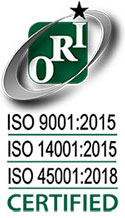
The disposal of obsolete electronic equipment is a major worldwide environmental issue. E-waste generation is expected to hit close to 50 million tons in 2018. It’s also continuing to increase. According to the Environmental Protection Agency (EPA), electronic waste is our society’s fastest growing waste stream with an annual 4-5% growth rate.
Approximately 75-80% of obsolete electronic equipment ends up in landfills, despite the fact that close to 100% is reusable or recyclable. And all garbage is not created equal: Even though e-waste only takes up 2% of landfill space, it produces 70% of our society’s overall toxic waste.
This doesn’t have to be the fate of your obsolete electronic equipment
By joining forces with a proven expert in global remarketing and responsible recycling, your off-lease products, excess inventory, consumer returns, and obsolete electronic equipment can take a different path. The overarching goal is always to capture the most value from each asset, turning a potential loss into a revenue stream for you.
Whether you have unused product in factory-sealed boxes or goods of uncertain quality, your partner will leverage testing, grading, and repair to prepare your end-of-life equipment for introduction into the global secondary IT marketplace. And, if remarketing is not an option, your obsolete electronic equipment can be recycled responsibly to minimize the environmental impact.
A closer look at testing, grading, repair
Testing
The process begins with the thorough inspection, sorting, and testing of each item. At Mainstream Global, all products go through multiple, quality-controlled steps by highly-trained technicians. Testing and screening services determine the disposition of components and find the optimum plan to repurpose for their intended use.
Grading
After inspection and testing, each item is sorted into one of five grading categories to indicate the viability of the technology. At Mainstream Global, the categories include:
- No Fault Found (NFF)
- No Trouble Found (NTF)
- Customer Induced Damage (CID)
- In Warranty (INW)
- Out of Warranty (OOW)
Materials sorted into the top two grading categories can be readied for resale in a secondary marketplace. Alternatively, the equipment can, at clients’ request, be redeployed into their reverse supply chain or replenish warranty spares inventory.
Repair
High-quality repair, refurbishment and repackaging services give new life to obsolete electronic equipment and set it up for remarketing success in a secondary marketplace such as Latin America.
With a team you can rely on and technicians with the training and experience to capture the most value from each asset, your old equipment can become an unexpected (and earth-friendly) revenue stream.
A better fate for obsolete equipment: secondary marketplace or responsibly recycled
The goal of an expert remarketing and recycling partner is to maximize the value of each and every asset, in order to gain the greatest amount of reuse from all materials received through the reverse supply chain while protecting your brand and safeguarding the environment.
What path will your company’s obsolete electronic equipment take?
Mainstream Global, Inc., headquartered in Lawrence, Massachusetts, owns and operates processing centers in Colombia, Peru, Chile, Argentina and Brazil. With over 18 years of directly servicing and re-selling assets from top tier manufacturers, Mainstream Global is the recognized expert in the region. Our partners rely on us for compliance, security, professionalism and brand protection all while providing the best returns and prioritizing global environmental standards.
Read more:
Standardized Procedures are Key to Secure Data Erasure: What You Need to Know
What You Need to Unlock Potential of Global Remarketing in Latin America





